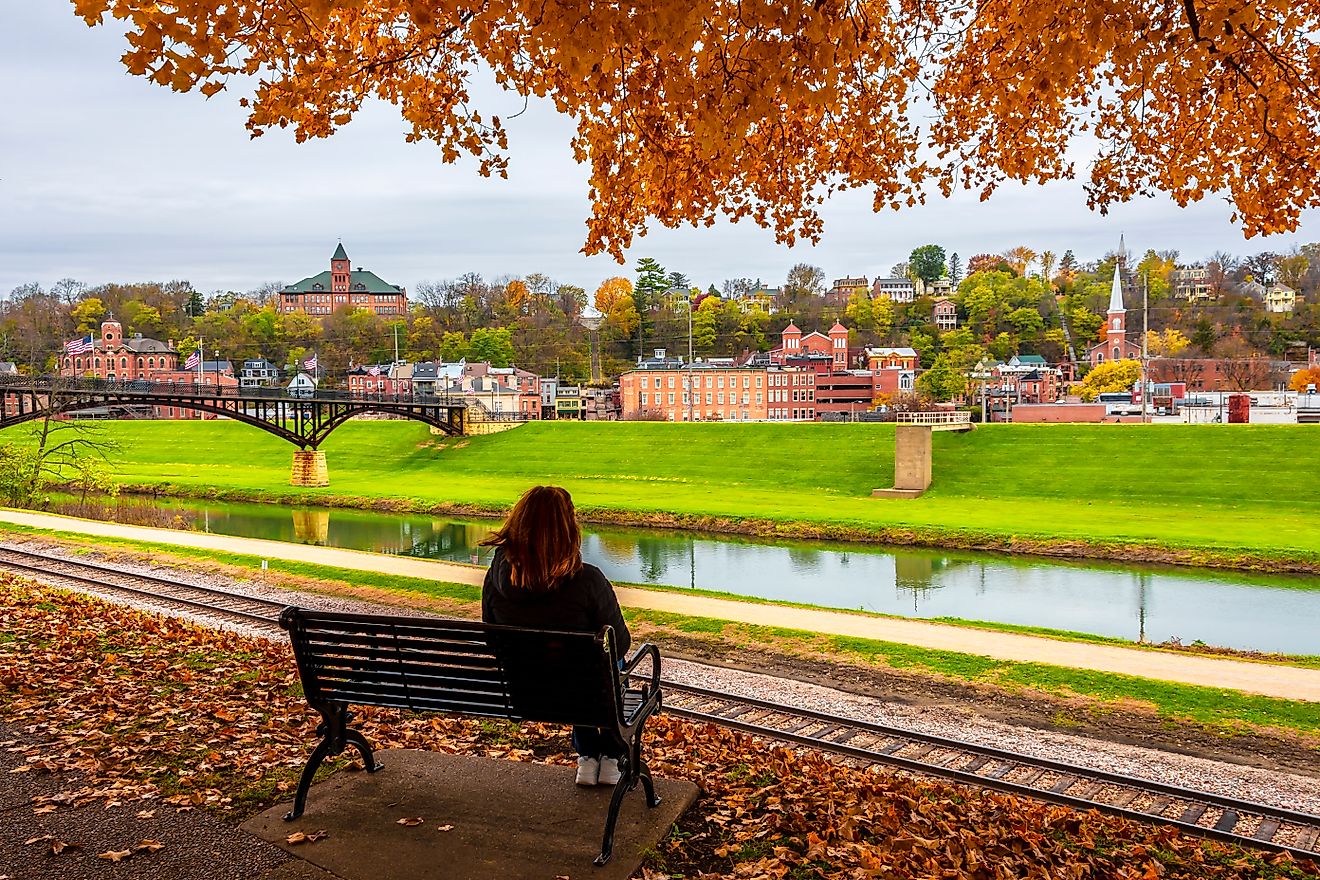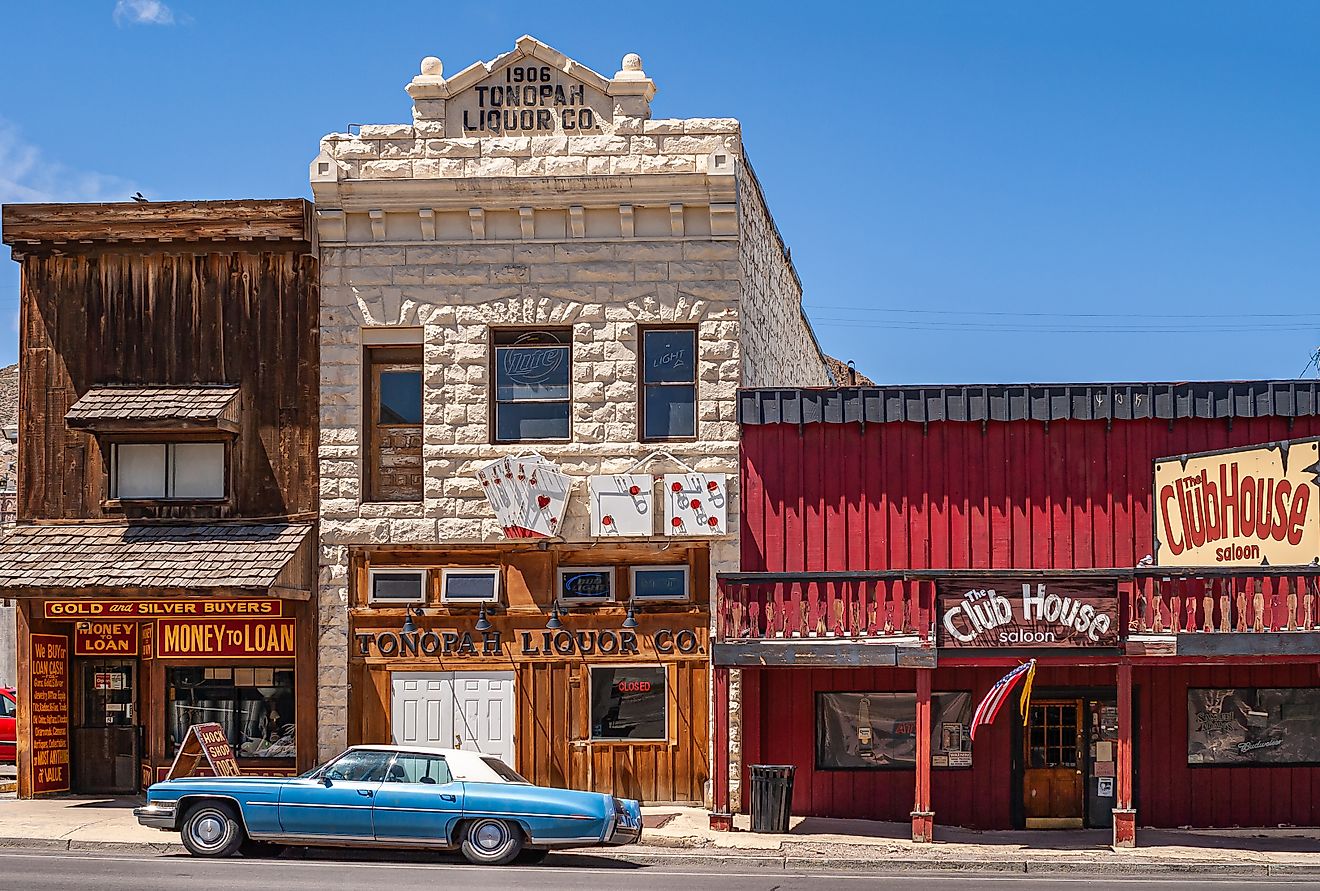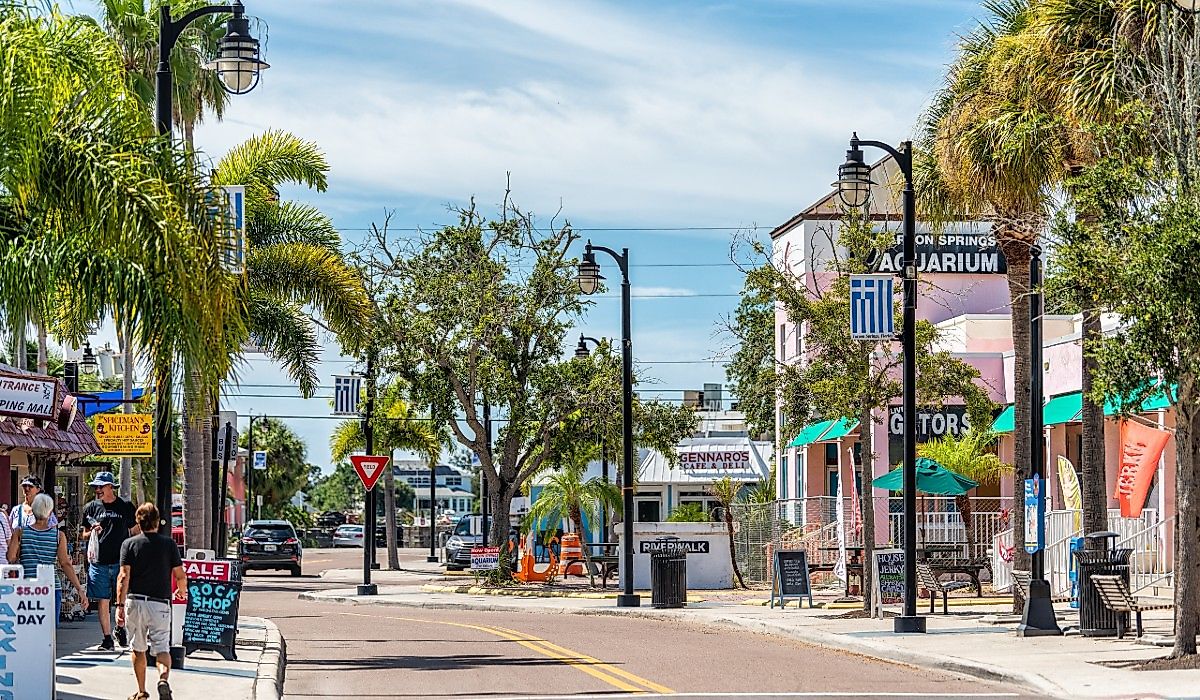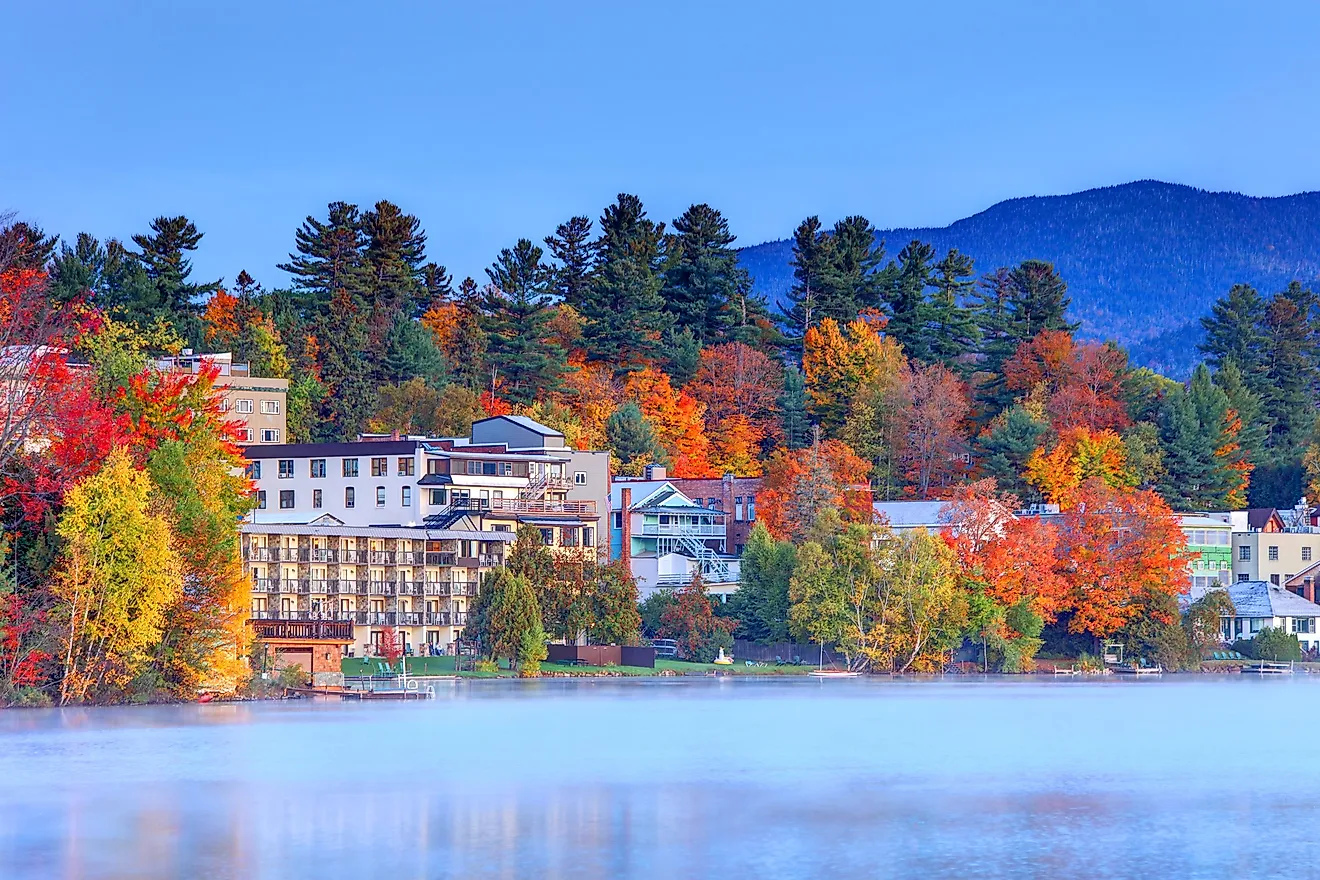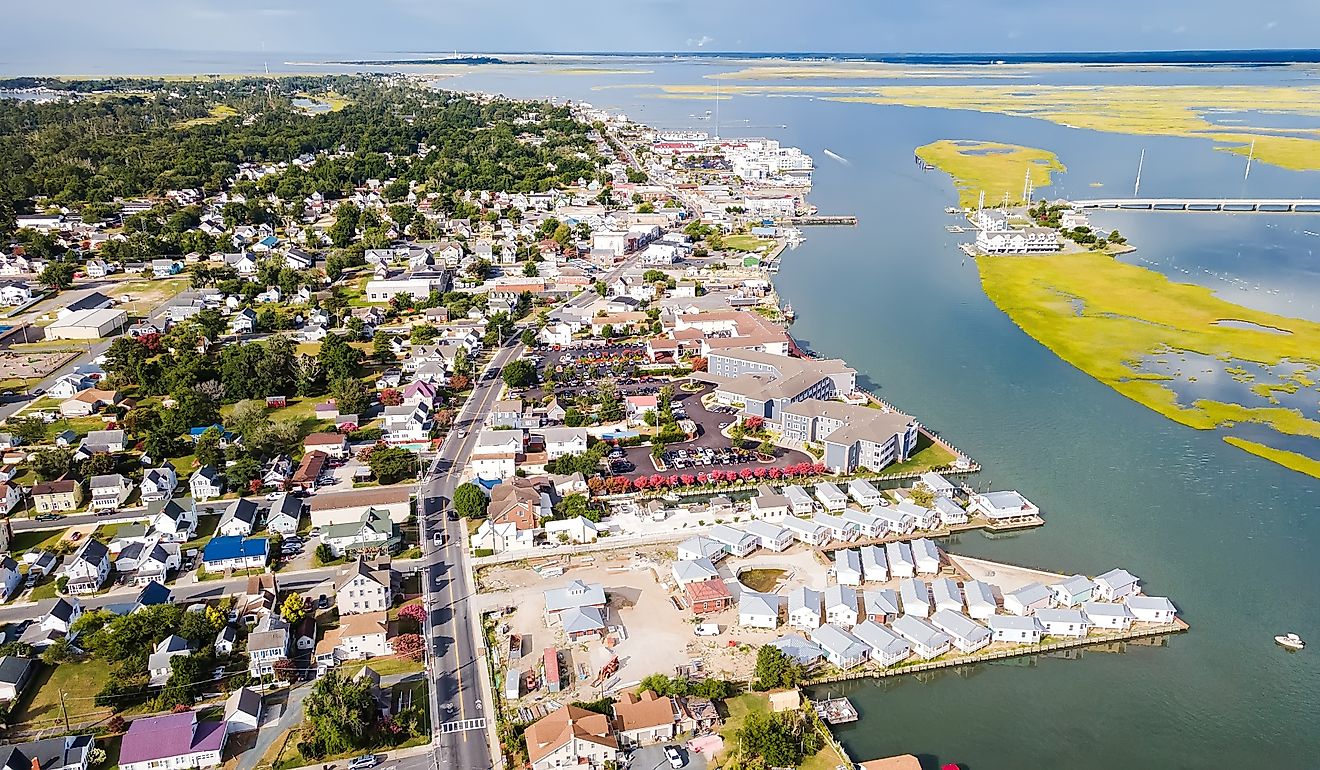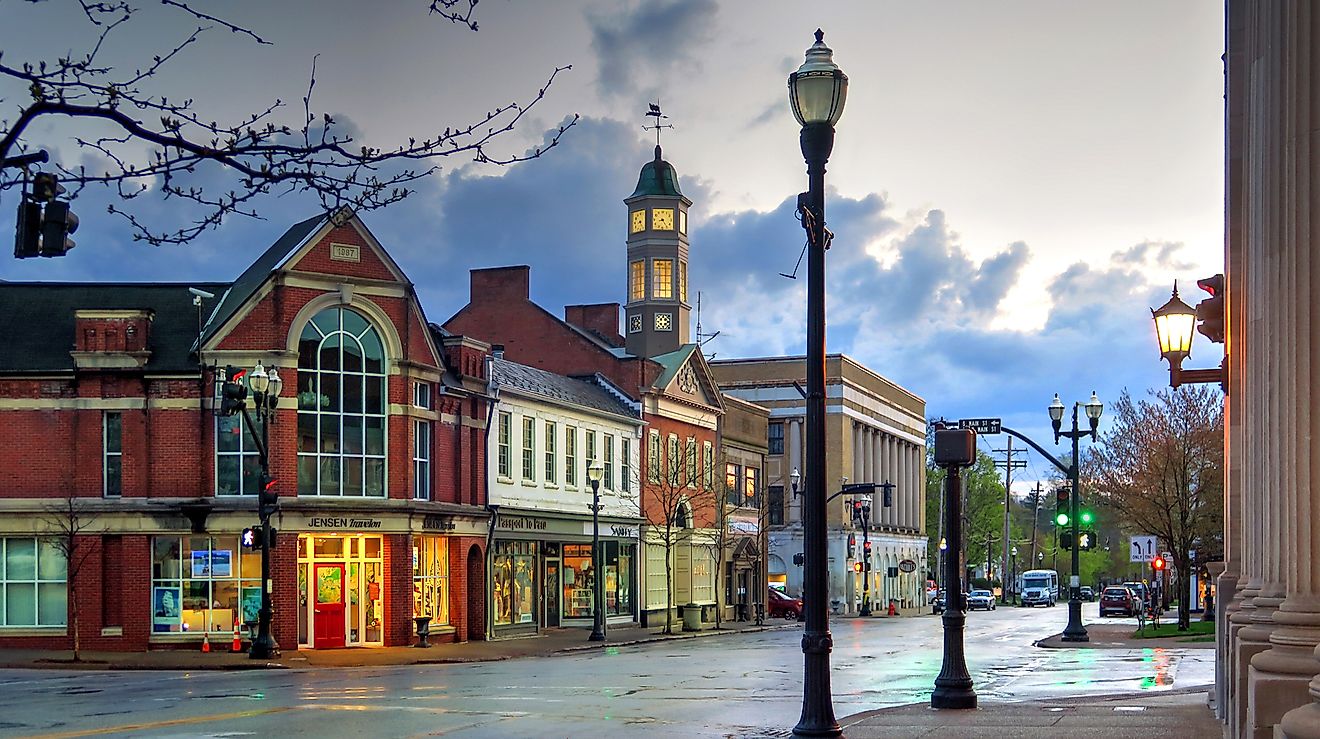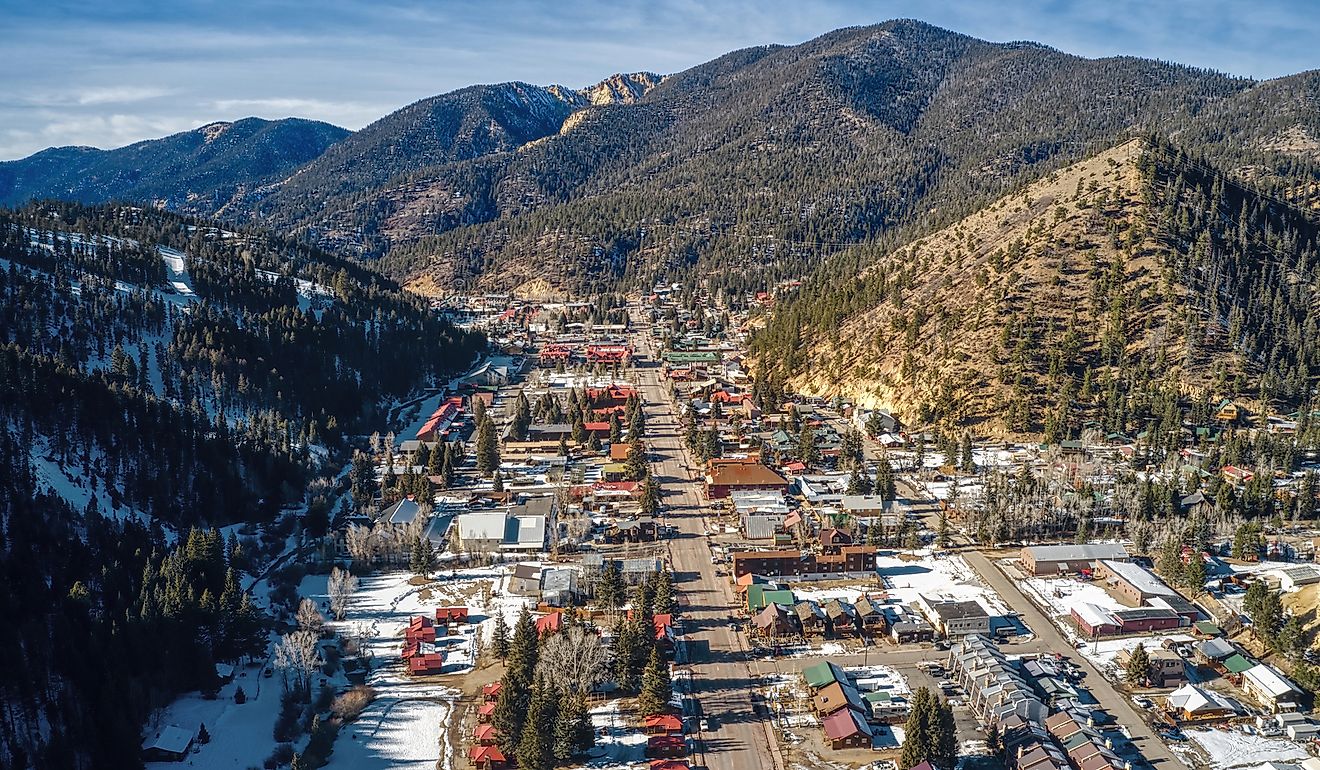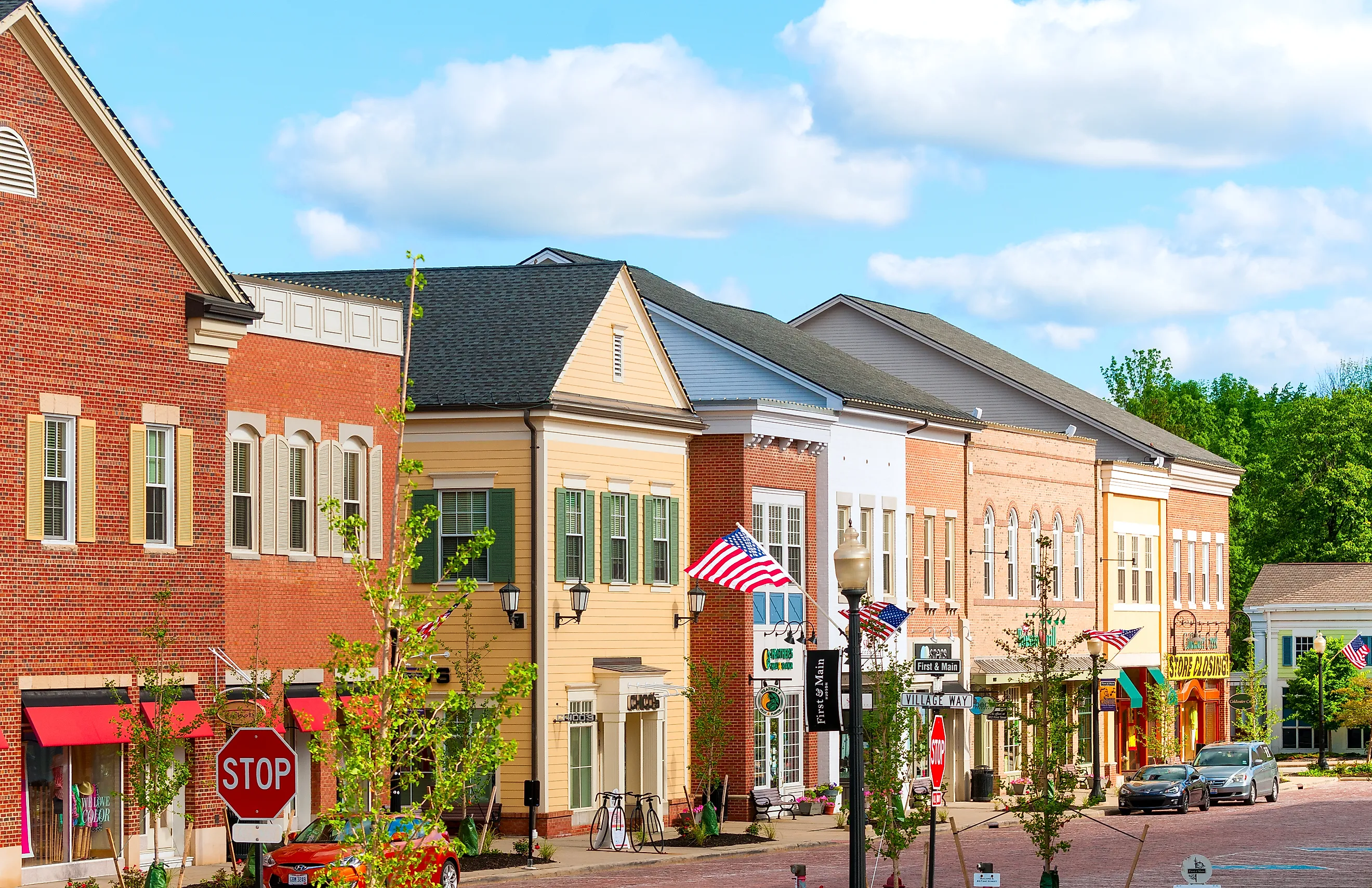
10 Standout Main Streets In Ohio
Ohio tells its story at curb level. Stand on a true main street here and the past still does its job: water powering a mill, rails skirting a depot, a courthouse clock deciding the workday.
That rule leads to precise places, not postcards. A waterfall under a bridge sets the tone in Chagrin Falls; Broadway in Granville runs straight from campus green to the inn lobby. Xenia Avenue in Yellow Springs ties a cinema to a trailhead. Marietta’s Front Street keeps a river at elbow height. Medina’s square orbits a gazebo and a toy-and-train trove; Hudson folds its historic North Main into First & Main without losing the green. Wooster lines up a courthouse, co-op, and bookshop on Liberty. Troy’s dome and levee sit within earshot of one another. Lebanon boards a vintage train from downtown. Mount Vernon revives an 1851 opera house on Main. Tipp City parks a canal lock beside lunch. Eleven streets, four blocks each, all signal-ready.
Chagrin Falls
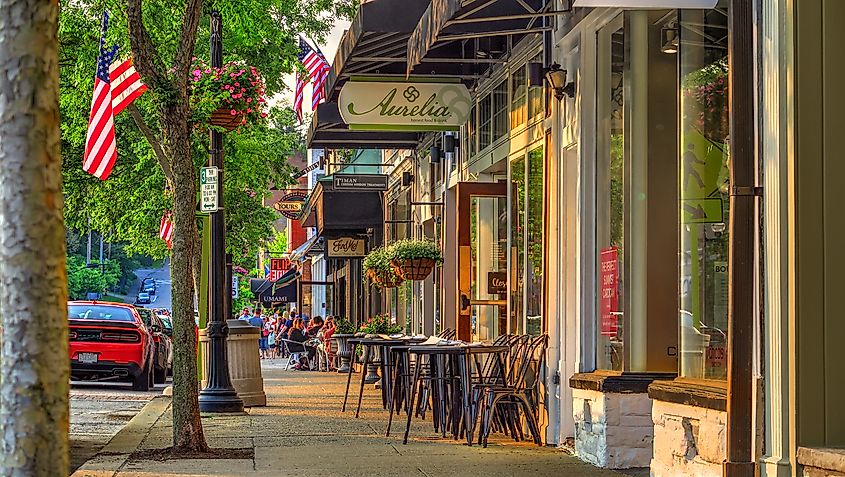
A waterfall runs through the center of Chagrin Falls, not behind it, not beside it, but directly under its Main Street bridge. This natural drop in the Chagrin River powered 19th-century mills and still defines the town’s layout. Incorporated in 1844 and once home to a bustling wooden ladder industry, Chagrin Falls feels surgically preserved in time, with Federal-style brick storefronts and iron lampposts lining its tight downtown grid. The falls remain visible from several angles, but the most iconic view is just steps from the Popcorn Shop, a 1870s candy store perched right at the river’s edge.
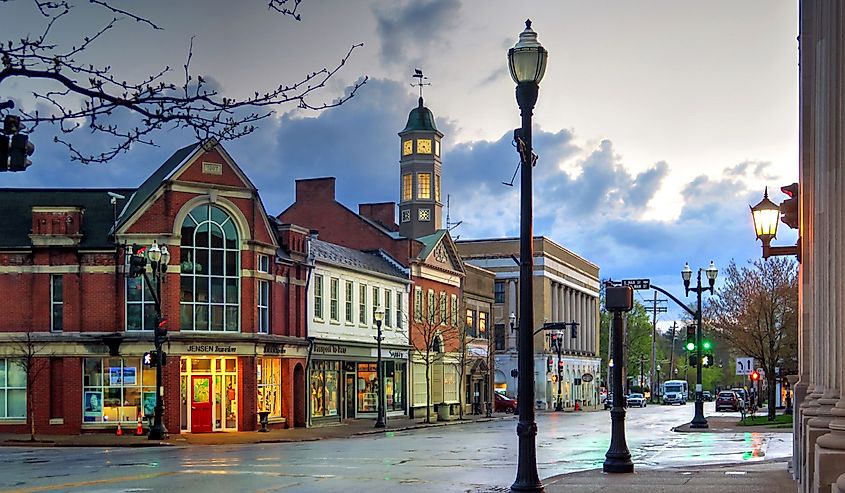
The walkable downtown is compact but layered. A few doors from the falls, Jeni’s Splendid Ice Creams serves whiskey pecan and brambleberry crisp with a view of Triangle Park, a public green often busy with easels and coffee cups. The Chagrin Falls Historical Society & Museum, tucked at 87 E. Washington St., offers well-kept exhibits on local glassblowing and the town’s quirky brush with early Hollywood; actor Tim Conway grew up here. For a quieter stop, the Chagrin Valley Little Theatre, one of the oldest community theaters in the U.S., stages plays in a venue just off River Street.
Granville
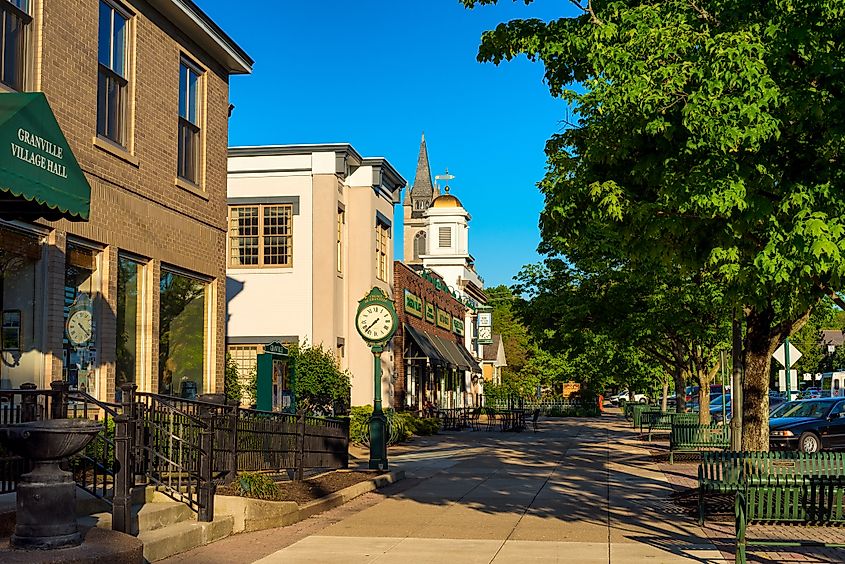
Granville was laid out in 1805 by New England settlers who brought their town planning with them, wide streets, white steeples, and brick sidewalks. It shows. The entire village reads like a Massachusetts transplant, but with Ohio’s quiet rural edges. At the base of a wooded ridgeline and marked by a prominent Greek Revival town hall, Granville’s main street, Broadway, stretches straight through its center, dividing century-old churches and densely clustered storefronts. Denison University sits just uphill, shaping the rhythm of the town without overwhelming it. Granville is also within a few miles of the Alligator Mound, an Indigenous earthwork structure that predates the town by over a thousand years.
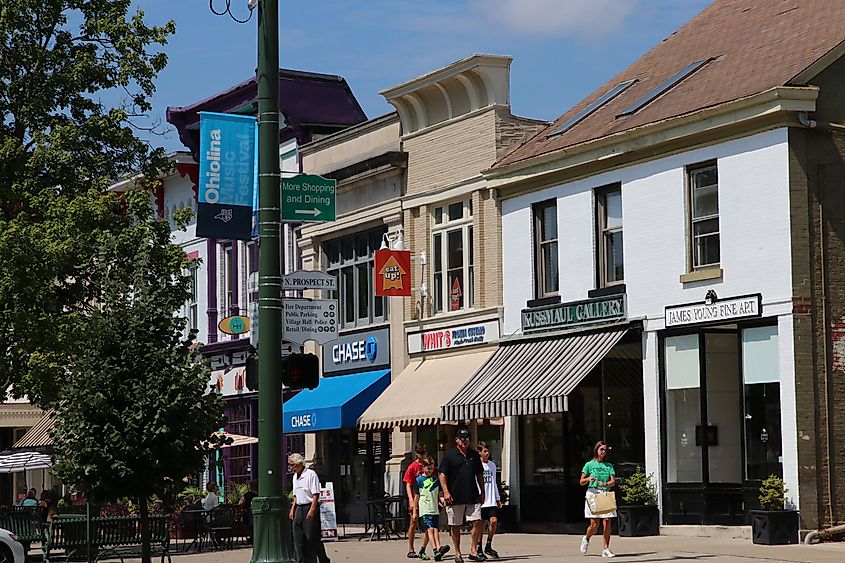
Broadway is the spine of the town, anchored by the Granville Inn, where polished wood interiors and a long bar make it a dependable stop for lunch. Across the street, Readers’ Garden Bookstore stocks new titles in a narrow space framed by creaky floorboards. Just east, the Robbins Hunter Museum, housed in the 1842 Avery-Downer House, keeps a trove of decorative arts and an 1815 clock that still tolls. On weekend mornings, the Granville Farmers Market (in Raccoon Valley Park on Saturdays and Ross’ Granville IGA lot on Tuesdays) offers baked goods, late-season squash, and the sound of a violinist posted near the post office steps.
Yellow Springs
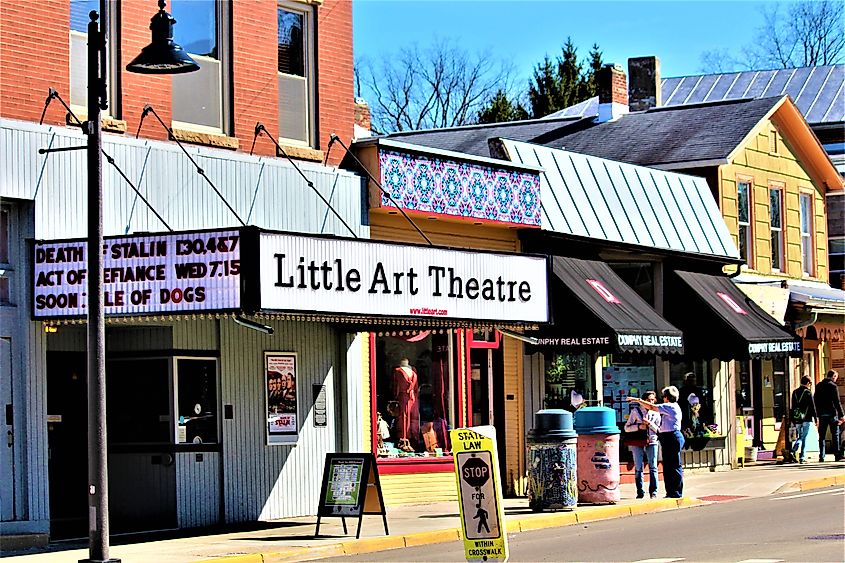
Yellow Springs was founded in 1825 as a utopian community and has never entirely shed that identity. The town’s long history of social activism, nudist colonies, and cooperative businesses feeds into its current pace, slow, expressive, and tightly self-regulated. Its main artery, Xenia Avenue, runs directly through a compact, walkable downtown filled with psychedelic murals, hand-painted signs, and open mic posters taped to light poles. Antioch College, one of the first U.S. colleges to admit both women and Black students, sits just a few blocks from the heart of town and still anchors its political and cultural lean.
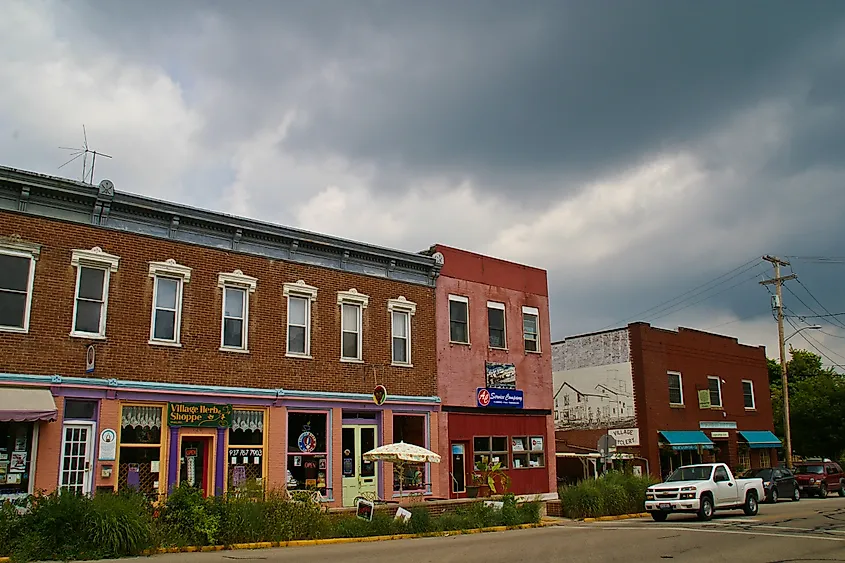
Dino’s Cappuccinos has been a reliable first stop on Xenia Avenue since the early 2000s, with small tables and steady foot traffic. Glen Helen Nature Preserve’s entrance is just behind the main strip; the Inman Trail leads past the Yellow Spring that gave the town its name. The Little Art Theatre, opened in 1929, still screens foreign and independent films under its small marquee. Across the street, Dark Star Books & Comics packs a narrow, high-ceilinged space with vintage sci-fi and boxy glass cases of figurines and pulp prints.
Marietta

Marietta was the first permanent settlement in the Northwest Territory, founded in 1788 at the confluence of the Muskingum and Ohio Rivers. The layout still reflects that early intent, broad streets, symmetrical blocks, and a working riverfront. Brick sidewalks run parallel to the floodwall murals and ferry docks. Main Street here splits between Putnam and Front Streets, where late-1800s commercial buildings face the river and a steady flow of barge traffic. The town sits directly above ancient Adena and Hopewell mounds; Mound Cemetery holds the largest known number of Revolutionary War officers buried in one place.
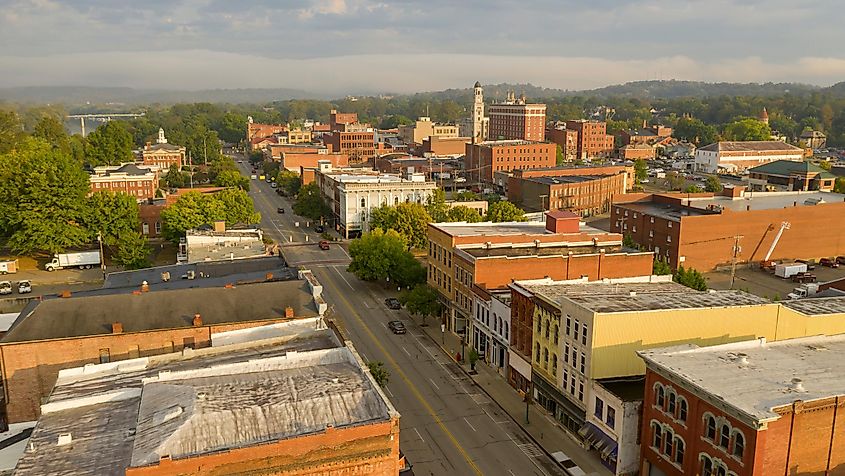
On Front Street, the Lafayette Hotel, with its pressed tin ceilings and Ohio River views, has operated in some form since 1918. A few doors down, Jeremiah’s Coffee House fills early with steamboat tourists and local teachers grading papers. The Campus Martius Museum, a few blocks off Putnam, preserves the original stockade house of Rufus Putnam, complete with exposed timber framing and 18th-century tools. For a quieter stretch, the River Trail heads south past the Harmar Bridge and ends at the confluence, where the Ohio flows east toward Parkersburg.
Medina
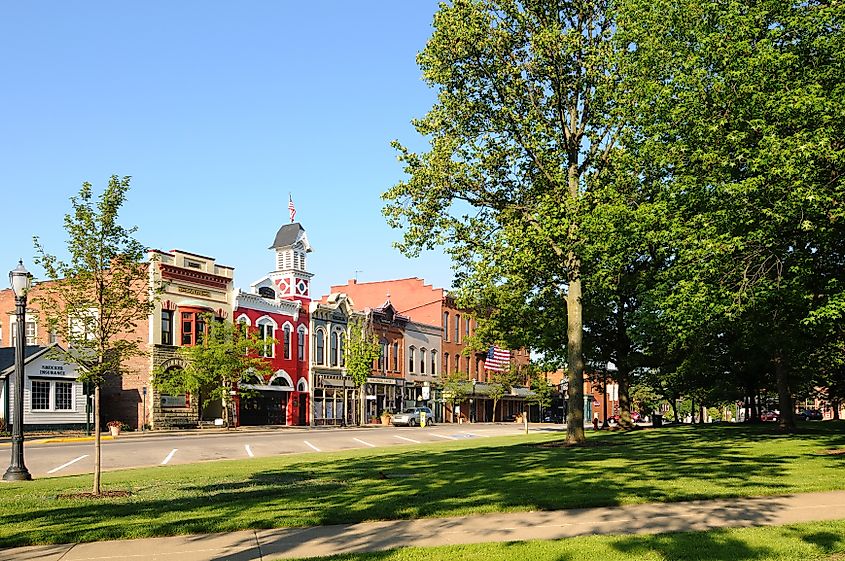
Medina’s public square was designed around a central park, not a courthouse. That decision, made after the original 19th-century downtown burned and was rebuilt in brick, set the tone for a commercial core that operates more like a commons than a corridor. The square’s layout wraps around Uptown Park, where the cast-iron gazebo anchors seasonal events and visible sightlines run down South Court and East Liberty Streets. Brick storefronts here tend to be low-slung and uniform, part of a post-fire building code that shaped one of the most visually coherent downtowns in the state.
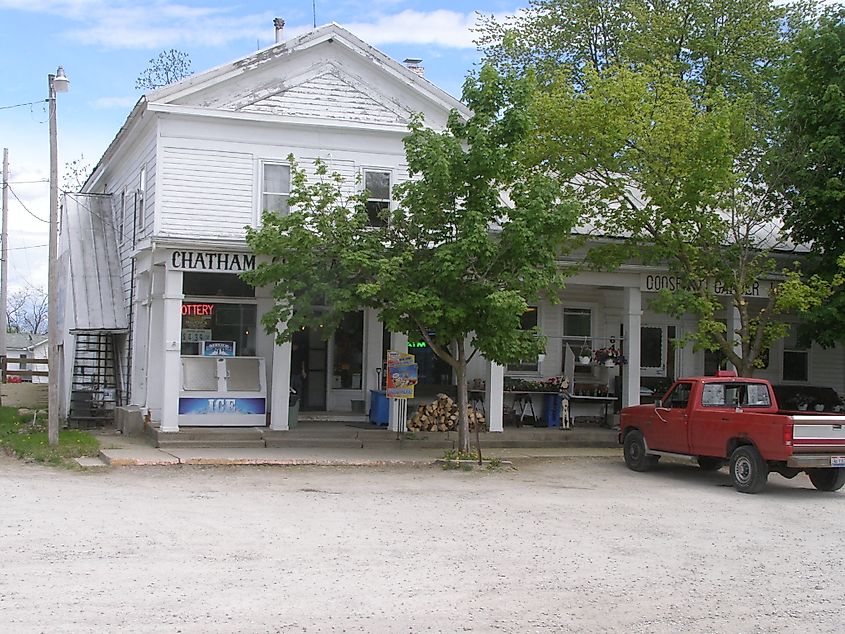
Castle Noel, a block off the square, holds the largest collection of holiday movie props in the U.S., including full window displays from old New York department stores. Cool Beans Café, facing South Court, fills by 8 a.m. with high school students and early retirees, especially in winter when the windows fog. Across the street, Miss Molly’s Tea Room occupies a converted pharmacy with pressed tin ceilings and glass cabinets of loose-leaf blends.
Hudson
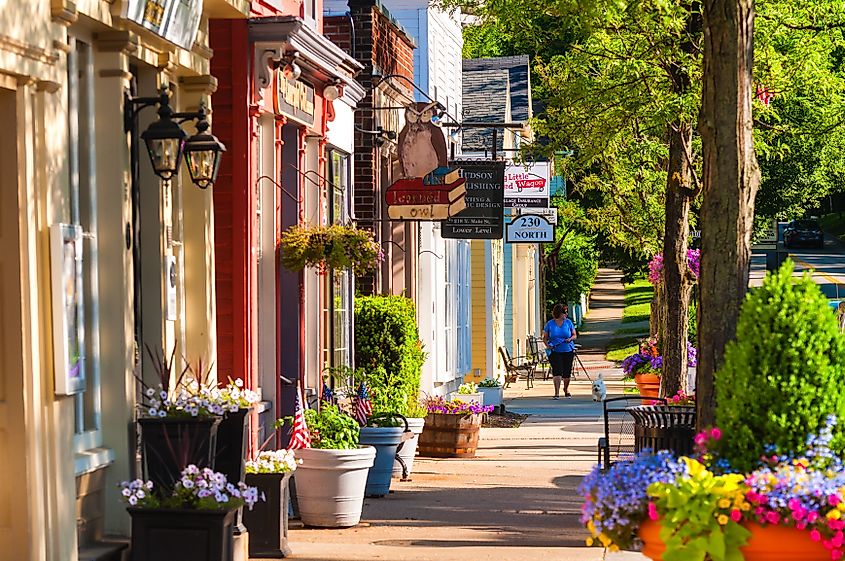
Hudson was built with a New England street plan, anchored by a green and framed by white steeples. It was the original home of Western Reserve College, later moved to Cleveland and renamed Case Western Reserve University. That early academic influence still marks the town’s structure, uniform setbacks, wide lawns, and a town center with no dominant structure. Main Street runs parallel to the central green, divided between the historic stretch to the north and the newer First & Main development to the south. The two halves are walkable and architecturally blended, which gives Hudson a double-layered downtown without disrupting scale.
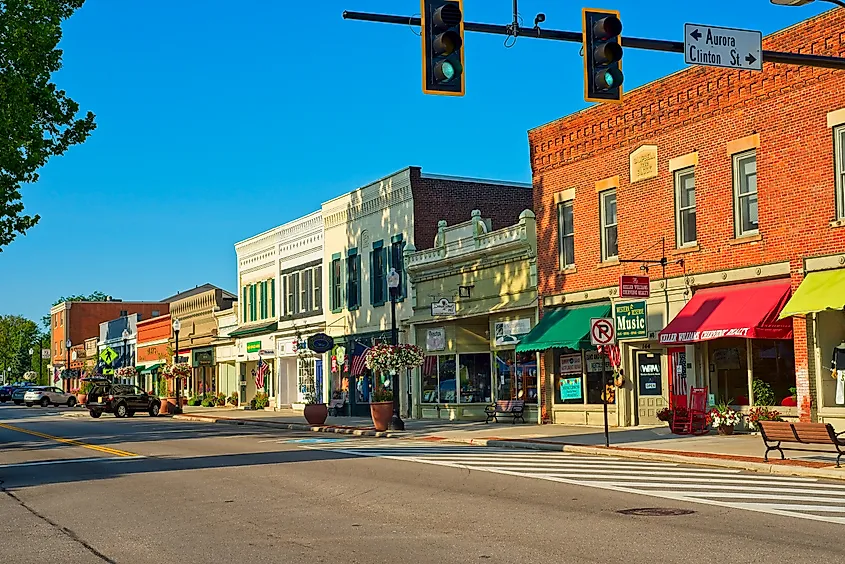
The Learned Owl Book Shop on North Main is a three-floor house-turned-bookstore with a basement full of regional history and long fiction backlist. A short walk south, Porta Rossa (49 Village Way) serves a regularly changing Italian menu, house-made pastas, seafood, and steaks, in an intimate dining room. Across the brick plaza, Vertical Runner sells marathon gear and hosts early morning group runs that leave from the clocktower. Kepner’s Tavern, inside a 19th-century carriage shop, balances its menu between steak and gnocchi, with bar seating under the original beams.
Wooster
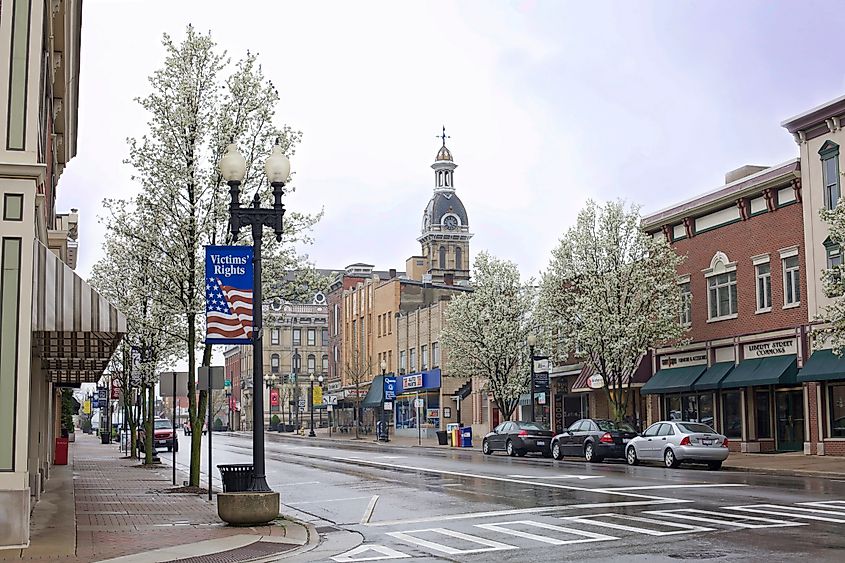
Wooster is the seat of Wayne County and home to The College of Wooster, one of the few liberal arts colleges in the country requiring every student to complete an undergraduate thesis. That academic presence sits just uphill from downtown but filters directly into the rhythm of Liberty and Market Streets, where bookstores, cafés, and co-ops operate alongside county offices and farm supply shops. The Wayne County Courthouse, a Second Empire structure with a mansard roof and clock tower, marks the center of town and is visible from every major intersection.
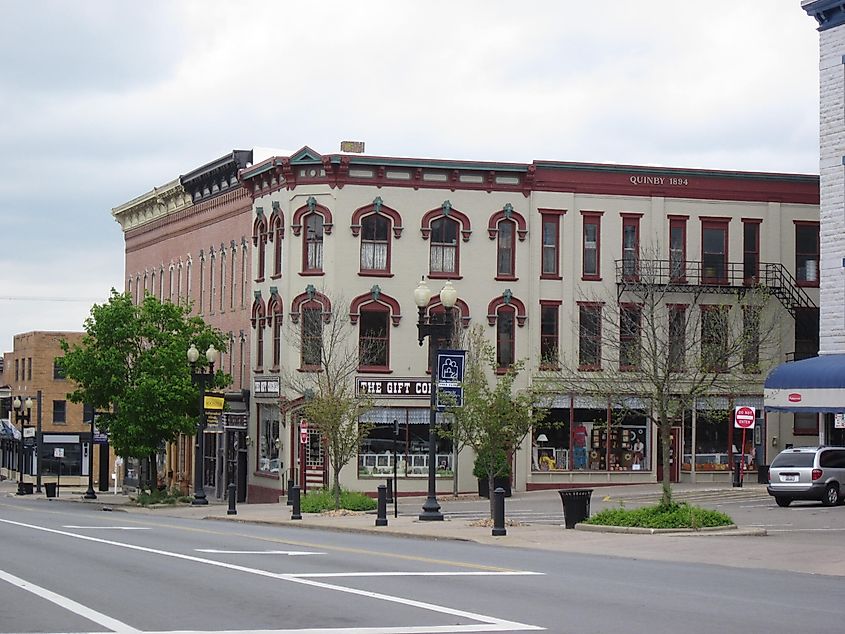
Downtown Wooster’s main axis runs along West Liberty Street, where Broken Rocks Café serves house-made bread and lunch service continues past three o’clock. Next door, Sure House Coffee Roasting Co. pours single-origin espresso in a narrow storefront facing the courthouse square. Local Roots Market & Café, half a block off Liberty, sells bulk grains, raw milk cheese, and early apples from surrounding farms. Books In Stock, farther down the block, stocks used and out-of-print titles, academic press runs, picture books, and small-batch Ohio poetry. South Market Street leads directly to Oak Hill Park, where trails open into woods just beyond the last block of brick storefronts.
Troy
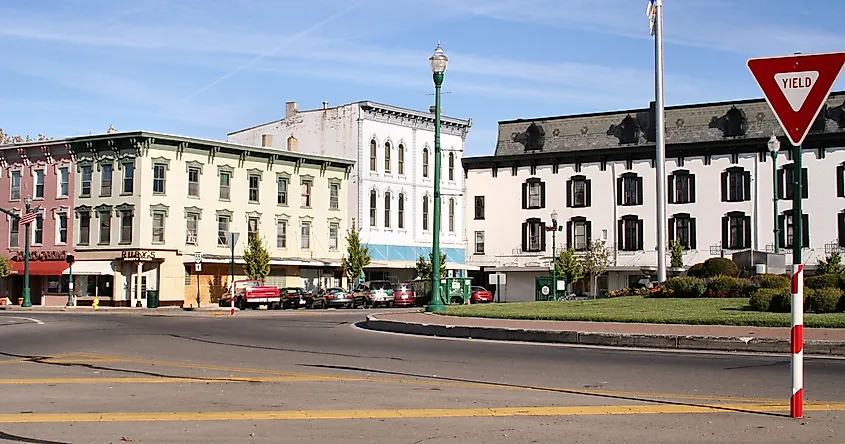
Troy was built with an open square around the Miami County Courthouse, a sandstone structure completed in 1888 with twin staircases and a clock tower that still marks the half hour. The Great Miami River bends just two blocks west of the square, kept in check by levees and a network of flood controls built after the 1913 disaster. That proximity to the water shaped Troy’s development, flat, walkable blocks with consistent commercial density and a direct connection to its canal-era past. The main street cuts west from the courthouse and blends into the neighborhoods without losing momentum.
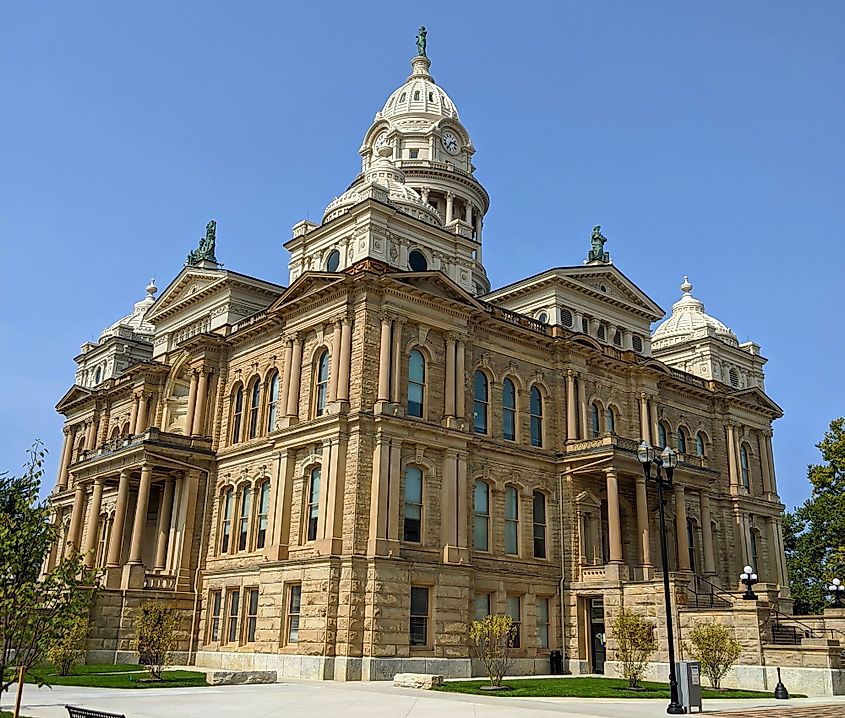
Bakehouse Bread & Cookie Company, on East Main, mills its own flour and sells dark loaves lined with oats. The Troy-Hayner Cultural Center at 301 W. Main mounts year-round art and local-history exhibits and co-presents the Fridays on Prouty summer concerts at nearby Prouty Plaza. From the square, the sidewalk leads west to Treasure Island Park, where the levee path runs beside the river and boaters launch upstream.
Lebanon
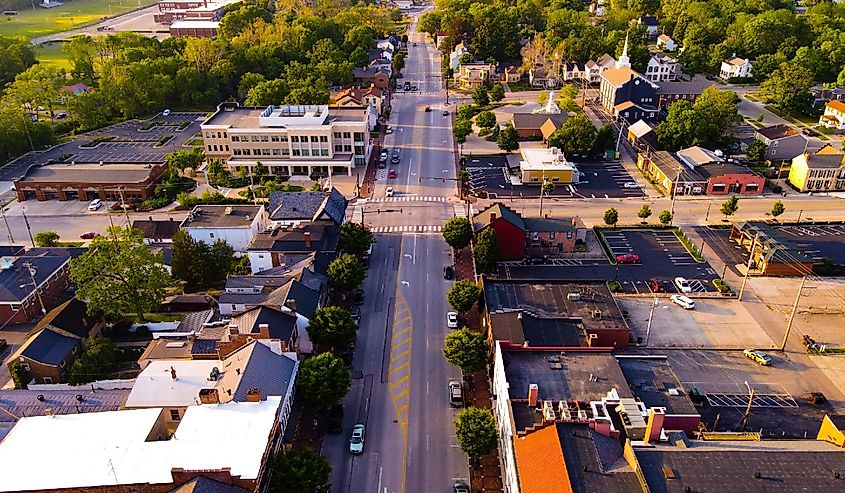
Lebanon’s downtown was built along an old coach line that once connected Cincinnati to Columbus, and the town still leans into that alignment. Main Street follows the old route, with original brick and frame buildings dating back to the early 1800s. The Golden Lamb, Ohio’s oldest operating inn, sits at the corner of Main and Broadway and has hosted twelve U.S. presidents, along with Charles Dickens and Harriet Beecher Stowe. Lebanon’s position on the edge of the Little Miami Valley kept it tied to agriculture and passenger rail long after neighboring towns shifted toward manufacturing.
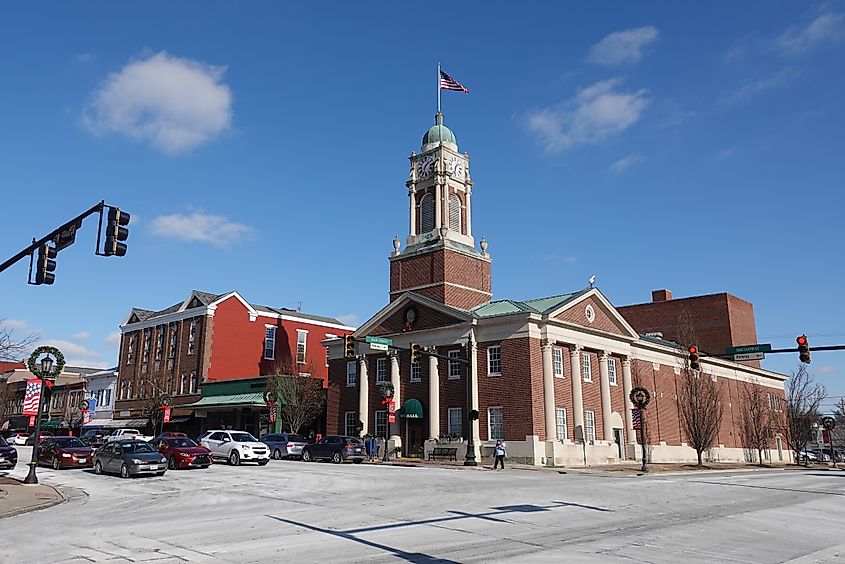
The Lebanon Mason & Monroe Railroad boards passengers just off South Street and runs seasonal excursions past farmland and river crossings. Black Horse Tavern, attached to the Golden Lamb, serves from a separate entrance and keeps the original stone foundation visible behind the bar. Broadway Barrel House, on West Main, runs live music under exposed rafters with a menu built around smoked pork and fried pickles. Harmon Museum, one block south, holds rotating exhibits on Shaker furniture, regional painters, and the town’s role in the Underground Railroad.
Tipp City
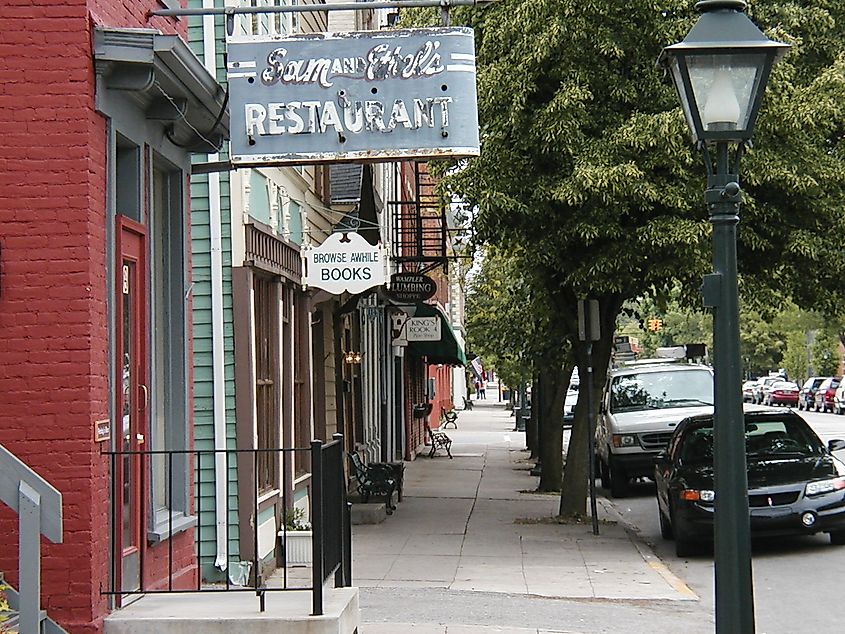
Tipp City was platted in 1840 alongside the Miami and Erie Canal, and its main street still runs parallel to the old towpath. Originally named Tippecanoe, after Harrison’s 1811 campaign slogan, the town shortened its name but retained the canal-era street grid and storefront layout. East Main Street holds nearly every original structure from its mid-19th-century boom. Flat-roofed brick buildings form an uninterrupted corridor from Sixth Street to First, with freight doors, stone lintels, and tin cornices still intact. The architecture doesn’t drift; it holds tight to its canal-town past.
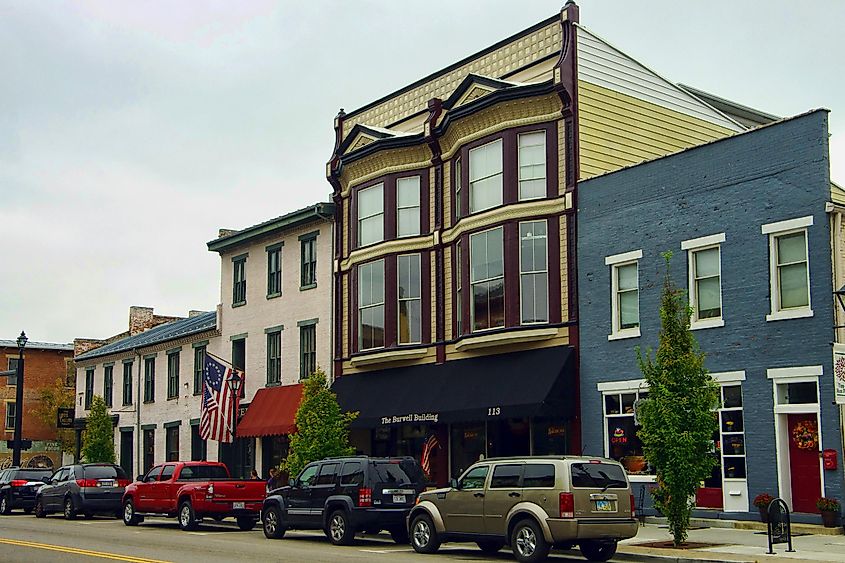
Coldwater Café operates out of a former bank, with a vault still visible behind the host stand and a menu that changes weekly. The Tipp City Public Library, across the street, maintains a curated Ohioana collection and connects directly to the town’s mural walk. Browse Awhile Books, a used and out-of-print shop, occupies two joined storefronts with glass display cases, paperback piles, and high-ceilinged alcoves of regional history. Canal Lock Park, just off First Street, preserves part of Lock 15 and opens into a tree-shaded path along the Miami Conservancy levee.
Ohio’s best main streets aren’t museum pieces; they’re working corridors where a courthouse clock, a river bend, or a campus green still sets the tempo. Within four blocks, each town names its anchors, inns, theaters, bookshops, depots, and delivers a complete day without detours. That cohesion is the point. When a place holds shape at curb level, value follows: markets run, lights switch at dusk, and the street keeps earning its keep.


